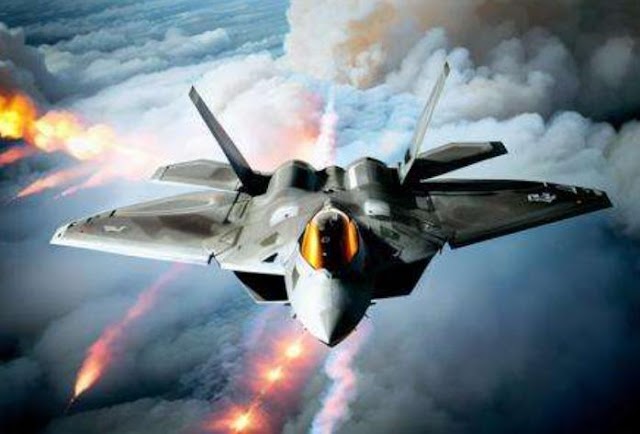Mikoyan MiG-31:
Mikoyan MiG-31, a supersonic aircraft developed for the Soviet Air Forces to replace the MiG-25 "Foxbat." Uncover its design lineage and the shared elements with the MiG-25, establishing its historical significance.
 |
| Mikoyan MiG-31 |
Speed and Endurance:
Explore the exceptional speed and combat capabilities that position the MiG-31 among the fastest jets globally. Learn how it continues to be a stalwart in the Russian Aerospace Forces and Kazakh Air Defense Forces, defying the challenges post the Cold War era.
Extended Service Lifespan:
Dive into the details of the Russian Defence Ministry's decision in 2020 to extend the MiG-31's service lifetime, shedding light on the announcement and its implications for existing airframes.
The MiG-31 in Action: 2022 Russian Invasion of Ukraine
Examine the pivotal role played by MiG-31 aircraft during the 2022 Russian invasion of Ukraine, focusing on their reported success in shooting down Ukrainian aircraft with the R-37 air-to-air missile.
R-37M Missile: A Game-Changing Threat
Unearth the emergence of the R-37M missile as the primary threat against the Ukrainian Air Force since October 2022. Explore its capabilities and understand its impact on the dynamics of the conflict.
Ukrainian Air Force's Challenge:
Delve into the challenges the Ukrainian Air Force faced, including a significant lack of fire-and-forget missiles and reliance on older missile models. Understand the tactical limitations and strategic adaptations during the conflict.
MiG-31's Superiority: A Lethal Combination
Explore the synergy of the MiG-31 and the R-37M missile, backed by advanced radar capabilities. Learn how this lethal combination has contributed to the increasing losses suffered by the Ukrainian Air Force.
October Report by the Royal United Services Institute:
Examine a detailed report by the Royal United Services Institute, highlighting the intensity of the conflict in October, where six R-37Ms were reportedly fired at the Ukrainian Air Force daily. Understand the strategic deployment of four MiG-31s to Crimea.
Countermeasures and Tactics:
Uncover the countermeasures adopted by Ukraine to mitigate the threat of R-37M missiles, including attempts to destroy MiG-31s on the ground. Explore specific incidents, such as the attack on the Belbek airbase and an attempted drone attack in August.
Technical Specifications:
Gain insights into the technical specifications of the MiG-31, including details about its crew, dimensions, weight, powerplant, and armament. Understand the aircraft's performance metrics, including speed, range, and combat capabilities.
Conclusion:
Summarize the key takeaways from the article, emphasizing the MiG-31's role in contemporary conflict, the potency of the R-37M missile, and the evolving landscape of air warfare.
(FAQs): Mikoyan MiG-31 and 2022 Ukrainian Conflict
Q1: What is the Mikoyan MiG-31, and why is it significant in modern aviation?
A: The Mikoyan MiG-31 is a supersonic interceptor aircraft developed for the Soviet Air Forces, designed to replace the MiG-25 "Foxbat." It remains significant due to its exceptional speed, combat capabilities, and continued operational use in the Russian Aerospace Forces.
Q2: When did the MiG-31 enter service, and how long is it expected to remain in operation?
A: The MiG-31 entered operational service with the Soviet Air Defence Forces 1981. As of 2020, the Russian Defence Ministry expects it to remain in service until at least 2030, following an announcement to extend the service lifetime of existing airframes.
Q3: What role did the MiG-31 play in the 2022 Russian invasion of Ukraine?
A: During the 2022 conflict, MiG-31 aircraft reportedly played a crucial role in shooting down several Ukrainian aircraft, primarily utilizing the long-range R-37 air-to-air missile. Their high speed and altitude allowed them to operate with minimal opposition.
Q4: What is the R-37M missile, and how has it affected the Ukrainian Air Force?
A: The R-37M is a long-range air-to-air missile, that emerged as the main threat against the Ukrainian Air Force since October 2022. Its extended range, combined with the MiG-31's superior radar, has contributed to increased losses for the Ukrainian Air Force.
Q5: What challenges did the Ukrainian Air Force face during the conflict?
A: The Ukrainian Air Force faced challenges, including a significant lack of fire-and-forget missiles and reliance on older missile models. This tactical disadvantage forced them to adopt innovative strategies, exploiting ground clutter and terrain-masking to engage MiG-31s.
Q6: How did Ukraine attempt to counter the threat of R-37M missiles?
A: To counter the threat, Ukraine attempted to destroy MiG-31s while they were on the ground. Specific incidents, such as the attack on the Belbek airbase and an attempted drone attack in August, were part of these countermeasures.
Q7: Can you provide technical specifications for the Mikoyan MiG-31?
A: Certainly, the MiG-31 has a crew of two (pilot and weapons systems officer), with dimensions including a length of 22.62 m, wingspan of 13.456 m, and height of 6.456 m. It features a powerplant with 2 Soloviev D-30F6 after-burning turbofan engines, among other specifications.
Q8: What is the significance of the MiG-31's advanced radar capabilities?
A: The MiG-31's advanced radar, such as the Phazotron Zaslon passive electronically scanned array radar, enhances its situational awareness and targeting capabilities. This contributes to its effectiveness in air-to-air engagements.
Q9: How does the MiG-31 compare to other modern combat jets?
A: The MiG-31 stands out among the fastest combat jets globally, making it a formidable interceptor. Its combination of speed, altitude capability, and advanced weaponry distinguishes it in the modern aviation landscape.










.jpeg)
0 Comments
If you have any doubts. Please let me know. I would be happy for your kind suggestion.